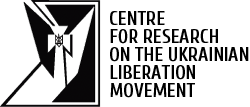
Stefaniya
Shabatura
artist, human rights defender, political prisoner
1938
|
2014
Stefaniya Shabatura was born in the village of Ivane-Zolote, in Ternopil region. Her mother Anna was a famous folk artist and craftswoman.
In 1961 Stefaniya graduated from Lviv Artist College and entered the part-time department of Lviv Institute of the Applied Arts that she graduated from in 1967.
During the interrogation in KGB her lecturer and thesis supervisor Karlo Zvirynskiy characterized Stefaniya as one of the few students who was critical about existing Soviet art and was one those who “instead of doing as is common way does in a different way”. She “... took a lively interest in all the subjects in the Institute. She was always asking questions that weren't easy to answer”. For example why art works abroad “are pretty, and in our country they are not”.
While learning Stefaniya worked as a painter at the Electronic Instrument Factory where she painted slogans and posters. She didn’t enjoy that and soon left the job. Subsequently worked at Lviv hosiery company “Promin” for a year (1966-1967)
The same time the Soviet press published articles about her “achievements in creative work, particularly production of carpets and themed tapestry. Tapestry “Dovbush”, “Kotlyarevsky” and others were successful…”. In 1970 Stefaniya Shabatura was accepted to the National Union of Artists of Ukrainian SSR.
After graduation from the Institute of the Applied Arts worked as a teacher in Lviv College of the Applied Arts and in Lviv Children’s Art School.

In November 1970 Valentyn Moroz was tried in Ivano-Frankivsk and Stefaniya was going to attend the trial in court. Community leader of the production facility was ordered to “meet with Shabatura and talk to her about her plans to attend the trial of Moroz”. “...he told her that it’s not her business and she shouldn’t attend the trial, but Shabatura answered that she will definitely go to the trial”.
With her friends Stefaniya made a stand for the wrongfully convicted Valentyn Moroz and passed the information on the trial to the Western countries. In her appeal to the Supreme Court she wrote about the bias in the case of Valentyn Moroz and called the trial as “unlawful” and “anti-Soviet”.
The next year Stefaniya created tapestries “Kassandra. “Wake up, Troya!! Your Death is Coming!!!” and “Lesya Ukrainka”. Latter was dedicated to the 100 anniversary of the birth of the poet but it wasn’t approved for the exhibition.


Tapestries were confiscated after the analysis requested by the KGB. The analysis stated:
“The image of Cassandra on the tapestry by Shabatura is full of painful expression and lacks deep aesthetic incarnation, it also lacks both sculpturesque and humanistic as well as passionate fulfillment as it is interpreted by Lesya Ukrainka in her poem.
The clear and conscious emphasis on the pessimism, ruin and despair made the tapestry distant from the genius work of Lesya Ukrauunka and dissonant with our era ...
The author unilaterally interpretes the topic selecting only tragedy and pessimism as main elements. This narrow-mindedness and biased approach of the author expresses her subjective sentiment and is not relevant to the approach of Soviet art that strives for meaningful completeness. Soviet people appreciate Lesya Ukrainika for her humanism, revolutionary passion, and commitment to social liberty reflected in “Kassandra”. With her tapestry the author contradicts the essence of social and philosophy views of Lesya Ukrainika





At the beginning of 1872 Stefaniya Shabatura took part in a large Lviv Christmas carol. On 12 January 19 participants of the carol were arrested in Kyiv and Lviv, and a criminal file against Stefaniya was opened. The next day her apartment was searched under the criminal case against Vycheslav Chornovol with whom she was acquainted.



KGB seized self-published “anti-Soviet slanderous texts”: “How and what B. Stenchuk Stands for” by Vyacheslav Chornovol and “Among the Snows” by Valentyn Moroz. They also found poems by Mykola Kholodny that Stefaniya received from Alla Horska and also his book “Scream from the Grave” presented by Ivan Hel, and book of Vasyl Stus “Merry Cemetery”. They also took film rolls and Minox camera that was hidden with documents in the oven.



14 January 1972 Stefaniya was accused in storing and distribution of anti-Soviet documents that contain “slanderous inventions against the Soviet social and government system stipulated by the Article 62, part 1 of the Criminal Code of Ukrainian SSR” and was detained in Lviv detention center.
Stefaniya Shabatura was accused of the following: from 1962 “for the purpose of disruption and weakening the Soviet authorities, systematically distributed in oral and written anti-Soviet slanderous inventions and with the same purpose stored in her apartment anti-Soviet slanderous documents that tarnish Soviet state and social system”.
Besides that, the criminal file mentioned transfer of different materials to the Western countries and contacts with the citizens of the USA, Canada and Belgium (all of them were from Ukraine). For example Bohdan Pevny, Khrystyna and Anton Koltunyuk, Kharytya Holod.
Particularly Stefaniya Shabatura introduced Lviv painter Levytsky to the family of Hevryks from the USA, who presented them a few of his black-and-white works. Afterwards an exhibition of black-and-white works of Ukrainian Soviet artists took place in New-York, according to the investigators the exhibition was aimed against the USSR. Some of the works were included to the exhibition with the assistance of Shabatura.
On 5 June 1972 Stefaniya Shabatura being under the investigation was expelled from the National Union of Artists of Ukrainian SSR. In ten days preliminary investigation was completed, materials collected were referred to the court.
In a month on 13 July judicial college in the criminal case of Lviv regional court sentenced Stefaniya Shabatura to 5 years of deprivation of liberty in a correctional labour camp under strict regime and 3 years exile.



Stefaniya was released from the camp Dubravlag in Mordovia in January 1977 and was exiled to the Kurgan region till 19 November 1979. She returned to Lviv where she lived under constant administrative supervision. In the end of 1980s she was an activist of Lviv “Memorial” and the People's Movement of Ukraine.

Stefaniya Shabatura was rehabilitated on 24 March 1994 in accordance with the Law of Ukraine “On rehabilitation of the victims of political repressions in Ukraine”
Five-volume archival criminal file is stored in the Archive of SSU in Lviv Region.






